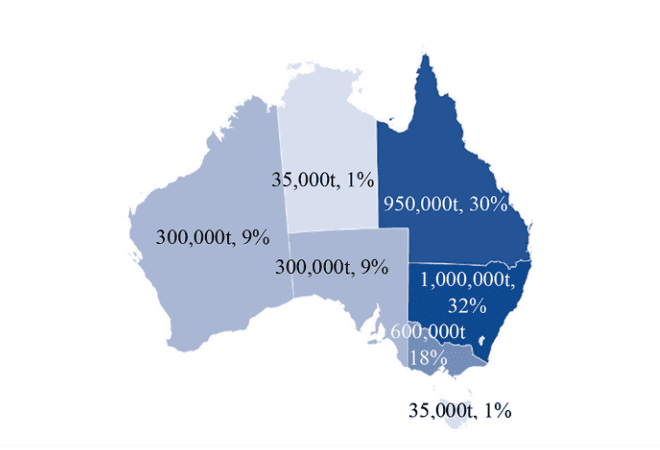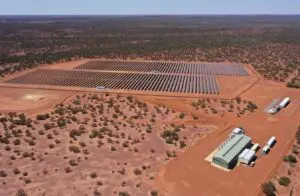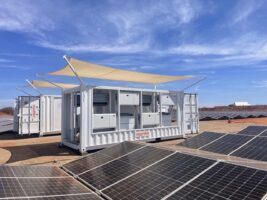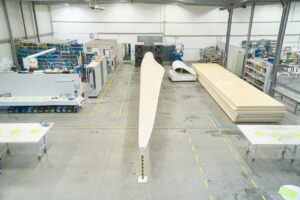It’s time to stop thinking about solar panels as the waste crisis of the future and view them as a valuable mining resource that can completely supply some of the critical materials the industry needs, says Dr Rong Deng from the University of New South Wales (UNSW).
The perspective shift comes as a paper led by Deng suggests recycled solar panels could, in 15 years, supply 50 per cent of the industry’s silver and aluminium needs, and within 25 years all of those needs as older models use more metals than newer, more advanced ones.
“The PV industry can run out of silver if the consumption level remains the same while the market is expected to grow 20 times. The implication is to reduce the amount of silver used in current solar panels or replace it with other materials (such as copper, which is what Sundrive is doing),” Deng told RenewEconomy.
“Recycling can help, but there would be a significant delay. We suggest that with effective recycling practices, in 15 years, the amount recovered from waste could be sufficient to meet demand, eliminating the need to mine from the earth. Instead, we would “mine” materials from waste.”

Where panels will come from is an area that isn’t well outlined yet by previous research, which was one point the UNSW researchers wanted to clear up.
By 2050, Queensland and NSW will account for about a third each of solar panel waste and the majority will be c-Si technology.
The primary material waste will be glass at around 2.5 million tonnes by 2050, as well as the aluminium frames and silicon contributing a significant portion at ~300,000 and ~120,000 tonnes respectively. Silver will be a smaller waste stream at ~5000 tonnes.
No, replacing your rooftop system early isn’t going to help
Deng cautions against making more waste than necessary, saying it isn’t economically or environmentally viable to take more solar panels out of circulation before their functional end-of-life.
“According to the waste management hierarchy, waste reduction is always the priority,” she says.
Australians’ love for rooftop PV means 80 per cent of old solar panels in the near future will come from residential solar, falling to 60 per cent in 2045, as government incentives and “insistent” salespeople encourage the early replacement of modules, despite still being technically sound, reducing the average practical lifetime of ≤100 kW systems.

“I think raising public awareness is the key there. Solar panels have a long lifespan of 25 or 30 years, which is quite rare for consumer products. None of the products we use daily—our cars, TVs, mobile phones—last that long. Australians are aware that solar can help reduce energy bills, but there should also be education on their longevity and the fact that they continue to generate electricity even after the payback period,” Deng says.
She says unfounded concerns about photovoltaic module toxicity and waste are slowing decarbonisation.
“The amount of e-waste is significantly higher than PV, and they also contain silver. Enhancing domestic recycling capability in general, to improve the resource recovery rate and retain them in our economy, rather than sending all valuable material containing waste overseas, is a good opportunity.”
By 2050, rooftop PV’s share of solar waste will dip to 60 per cent.
Recycle, or face constraints
The researchers dramatically hiked estimates for the volume of solar photovoltaic panels coming offline in the years to 2050.
By 2030 they estimate the cumulative volume of end-of-life solar panels – four-fifths of which will be from rooftop solar systems which are often replaced sooner than their technical lifetime – will be 250,000 to 700,000 tonnes.
By 2050, that figure will hit 2-3 million tonnes.
These figures are as much as seven times higher than other research estimates and one to two times higher than the waste forecast published by DEECCW, Deng says.

If Australia and the world doesn’t start looking at solar panels as a mining resource, the industry will start putting pressure on resource reserves as demand rises.
If the world was able to hit 100 per cent renewable energy with 20 terrawatts (TW) of installed PV globally by 2050, that would require 15 years of global silver supply.
Indium, used in thin film panels, could be used entirely within the next 16–55 years if demand remains constant. And global reserves of tellurium could be depleted in 63 years at current supply rates.










